Water-Energy Nexus Systems Modelling
Client: World Bank Group
Executing organization: SIC ICWC
Implementation period: 17.01.2025 – 30.09.2025
The project is aimed at the development and improvement of a regional integrated model for water and energy resources management in the Aral Sea Basin. The goal of the project is to create a tool that will allow for a comprehensive assessment of the impact of various climate change and socio-economic development scenarios on the management of water and energy resources in the region. The integrated model will be used to analyze and optimize management strategies to improve agricultural productivity, ensure the rational use of water resources, and support regional energy security. The project is being implemented by SIC ICWC with support from the World Bank Group.
Project activities:
- Development and improvement of integrated regional models of water-energy systems in the Aral Sea basin.
- Facilitate stakeholder participation in model development, scenario analysis and policy evaluation;
- Stakeholder engagement to inform coherent management of water-energy systems and promote regional cooperation in Central Asia.
First phase of the project: Training and testing of the WEAP model
In the first phase of the project, special attention was given to training technical specialists in the use of the Water Evaluation and Planning System (WEAP) model. A series of capacity-building activities was organized, including both in-person and virtual sessions. These activities were aimed at a comprehensive understanding of the model’s functionality, its adaptation to the conditions of the Syr Darya and Amu Darya river basins, and its practical application for water use scenario assessment and the development of resource management strategies.
1st Practical Workshop
On February 10, 2025, the Training Center of SIC ICWC welcomed the participants of the first one-day practical workshop organized in collaboration with the World Bank Group as part of the project "Water-Energy Nexus Systems Modelling".
The workshop featured thematic sessions focused on the Water Evaluation and Planning (WEAP) and Long-range Energy Alternatives Planning (LEAP) models. These tools are designed to analyze and forecast water and energy resources and assess the implications of various management scenarios within the water-energy system.
Model developers from the Stockholm Environment Institute (SEI) presented existing forecasting models for the Amu Darya and Syr Darya River basins. They provided detailed insights into the capabilities of these models, their structure, calculation methodology, and key parameters influencing modelling outcomes.
The workshop was attended by participants from the SIC ICWC team and Technical Group 1, which included representatives from Kazakhstan, Kyrgyzstan, Tajikistan, the Research Institute of Irrigation and Water Problems, CDC "Energy", BWO Amu Darya, and BWO Syr Darya.
In the course of discussions, the participants agreed on a schedule of follow-up activities for further development and customization of the WEAP and LEAP models. Key dates for upcoming workshops were also specified to follow a step-by-step approach to refining all aspects of modeling and data integration.
Virtual Session 1 “Water Allocation and Demands” – Part of the “Water-Energy Nexus Systems Modelling” Project
On February 21, 2025, the first virtual session, titled "Water Allocation and Demands", was held at the Training Center of SIC ICWC. This session was organized by SIC ICWC in collaboration with the World Bank Group and the Stockholm Environment Institute (SEI) as part of the "Water-Energy Nexus Systems Modelling" project.
This session marked the beginning of a series of three training sessions designed to provide participants of Technical Group 1 with a comprehensive introduction to the Water Evaluation and Planning (WEAP) system, with a specific focus on its application in the Syr Darya and Amu Darya River basins. The training will cover the diverse water use sectors in the region, including domestic supply, agriculture, hydropower and in-stream ecological flows
The session focused on key concepts of water allocation, including the distinction between consumptive and non-consumptive water demands in the river basins. Participants explored how the WEAP models allocate limited water resources across multiple sectors, taking into account the priorities of each, such as domestic supply, agriculture, hydropower, and in-stream flows.
As a result of the session, participants gained hands-on experience in setting-up and analyzing water demand by sectors. They also learned about sectoral priorities and how to evaluate trade-offs in allocation strategies.
Virtual Session 2 “Modelling Scenarios” as part of the Water-Energy Nexus Systems Modelling Project
On February 28, 2025, the second virtual session titled "Modelling Scenarios" was held at the Training Center of SIC ICWC. This session was organized by SIC ICWC in collaboration with the World Bank Group and the Stockholm Environment Institute (SEI) as part of the "Water-Energy Nexus Systems Modelling" project.
This session is a part of a series of virtual workshops designed to provide participants from Technical Group 1 with a comprehensive introduction to the Water Evaluation and Planning (WEAP) system, with a specific focus on its application in the Syr Darya and Amu Darya River basins. The training addressed various water use sectors in the region, including domestic supply, agriculture, hydropower and in-stream environmental flows.
The session focused on developing modelling scenarios for the Amu Darya and Syr Darya River basins. Participants explored in detail the process of creating and implementing current scenarios in WEAP and learned the fundamental principles of working with the model. Additionally, participants gained an understanding of how to apply these scenarios in the Aral Sea WEAP model, which helped them better understand the potential consequences of various water use scenarios in the region.
As a result of the session, participants gained hands-on experience in creating scenarios in the WEAP model and applying them in Aral Sea WEAP. They also received methodological materials and recommendations on how to use the model for water resources analysis and scenario assessment. The session not only to deepened participants' knowledge but also provided them with practical skills needed for future work in water resources modelling.
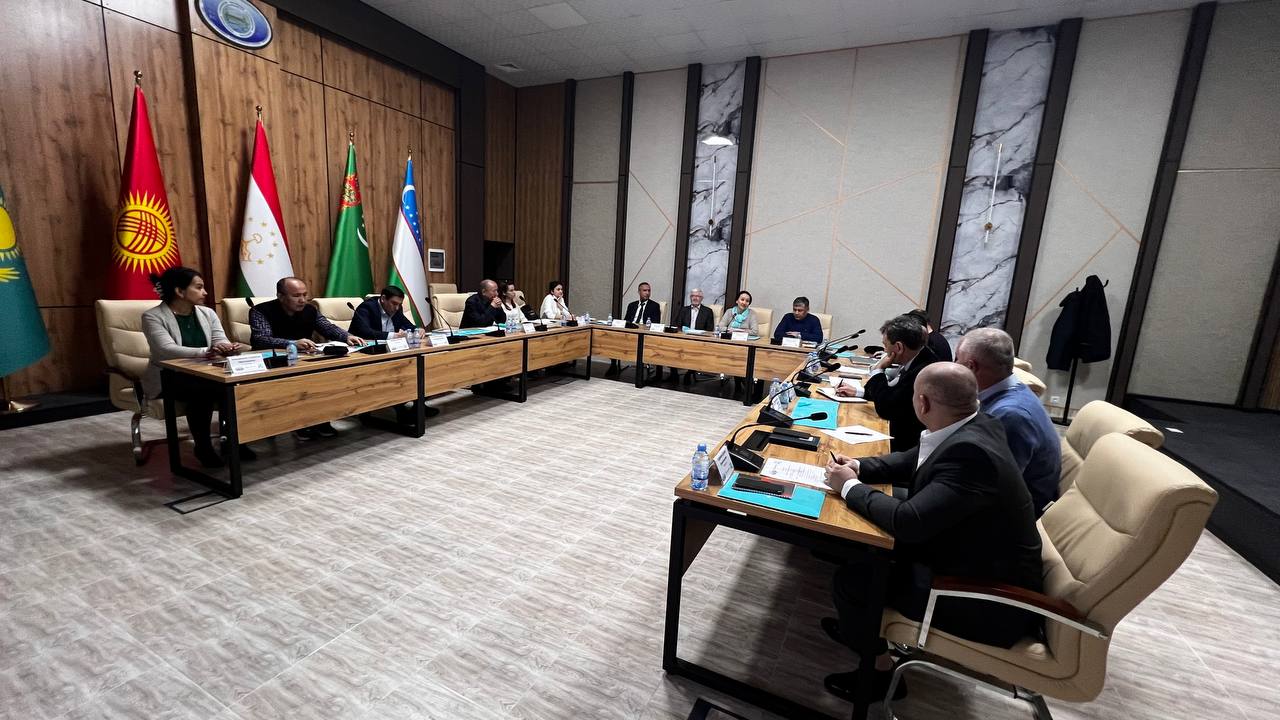
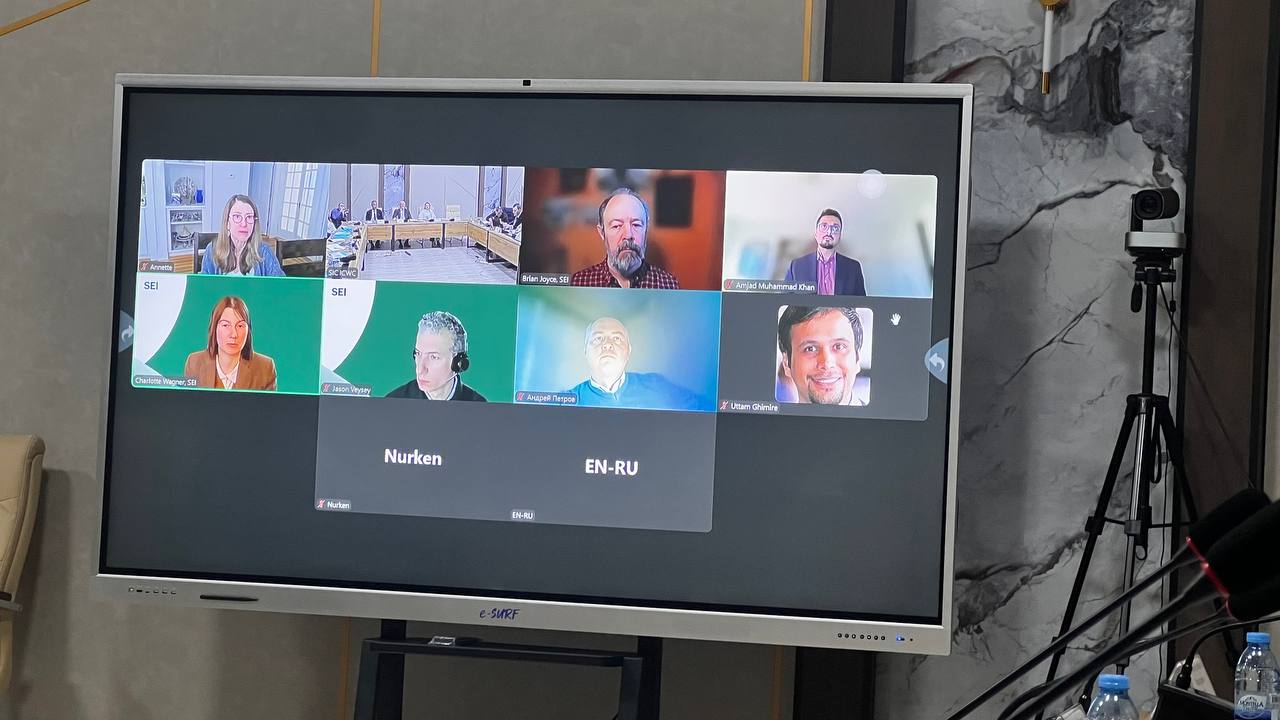
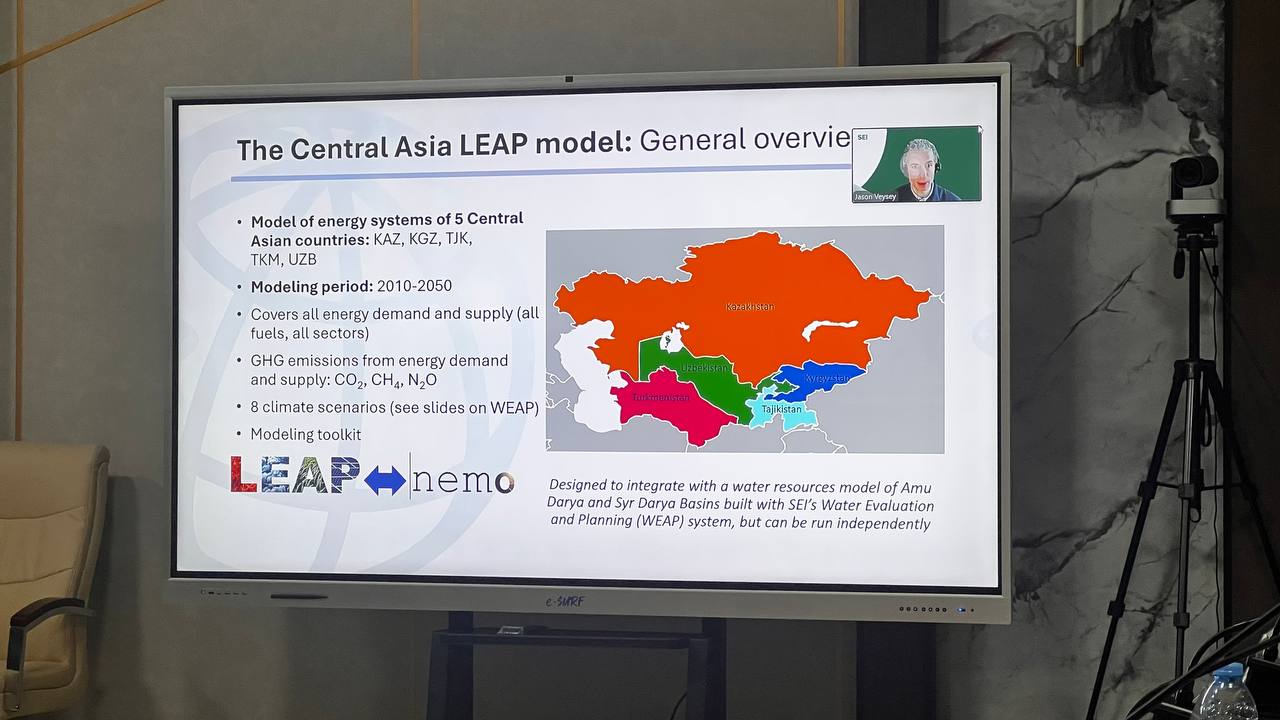
Training as part of the Water-Energy Nexus Systems Modelling Project
On March 10-14, 2025, SIC ICWC at its Training Center hosted a workshop organized in collaboration with the World Bank Group as part of the project Water-Energy Nexus Systems Modeling. Participants in the workshop included the SIC ICWC team, Technical Group 1, and international experts Amjad Muhammad Khan (World Bank), Brian Joyce (Stockholm Environment Institute), and Uttam Ghimire (Stockholm Environment Institute).
This in-person training continued the series of workshops focused on the comprehensive study of the WEAP (Water Evaluation and Planning) model for the participants of Technical Group 1. A key area of focus was the application of WEAP in the Syr Darya and Amu Darya River basins. The training included both theoretical and practical sessions on critical topics, such as climate change projections, hydrological models, water resource distribution, flow regulation by reservoirs, MABIA, data handling, and new scenario building.
The training focused on developing modeling scenarios for the Amu Darya and Syr Darya River basins. Participants gained an in-depth understanding of building and implementing current scenarios in the WEAP model, and acquired key principles of its operation.
Participants concluded the session with practical experience in WEAP data handling and scenario development. They received methodological materials and recommendations for water resources analysis and scenario assessment. The session reinforced theoretical knowledge through practical application, equipping them with valuable skills for future modeling work.
A field trip to several facilities of BWO Syr Darya in the Chirchik River basin was organized as part of the event. Participants toured the Upper Chirchik Hydroscheme and the headworks of the Zakh and Khanim canals, gaining firsthand insight into Uzbekistan’s water infrastructure operations.
During the discussions, the participants agreed upon the next stages of work within the Water-Energy Nexus Systems Modelling project. The training effectively improved technical knowledge and fostered valuable collaboration among experts from diverse organizations, facilitating future project progress.
The second phase of the project "Modeling Water–Energy Nexus Systems" is currently underway, focusing on the energy component and the development of a model using the LEAP (Long-range Energy Alternatives Planning System) tool. This phase places particular emphasis on analyzing the structure of energy consumption, sources of energy generation, and the development of sustainable energy development scenarios, taking into account regional specificities. The work is being carried out with the involvement of international experts and representatives of relevant organizations from Central Asian countries.
As part of this phase, one online seminar has already been held, dedicated to introducing the LEAP model, its capabilities, and main functions. The seminar served as a first step toward building a shared understanding of the methodology among participants and setting the stage for further collaborative work on the model.
Virtual Session 1 Introduction to Energy Systems Modelling
On 7 July 2025, the Training Center of SIC ICWC welcomed the participants of the one-day workshop organized in collaboration with the World Bank Group as part of the project "Water-Energy Nexus Systems Modeling".
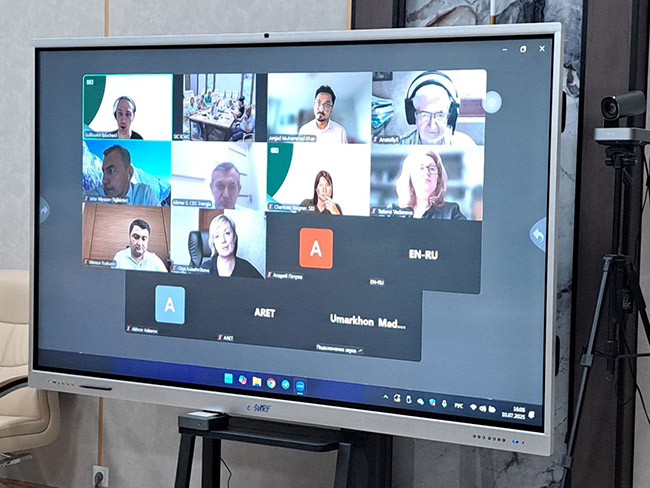
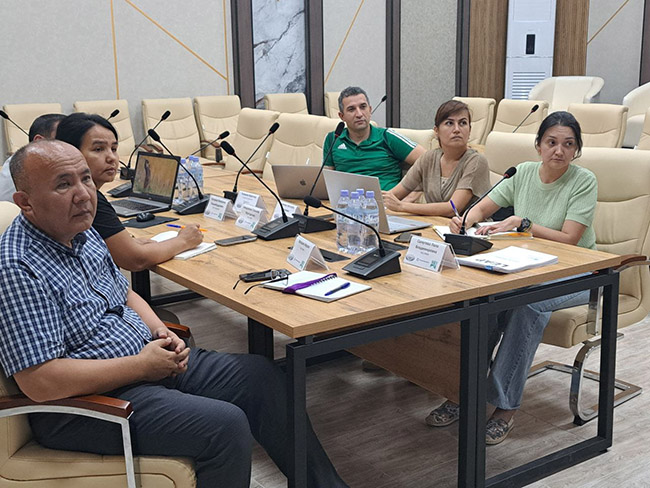
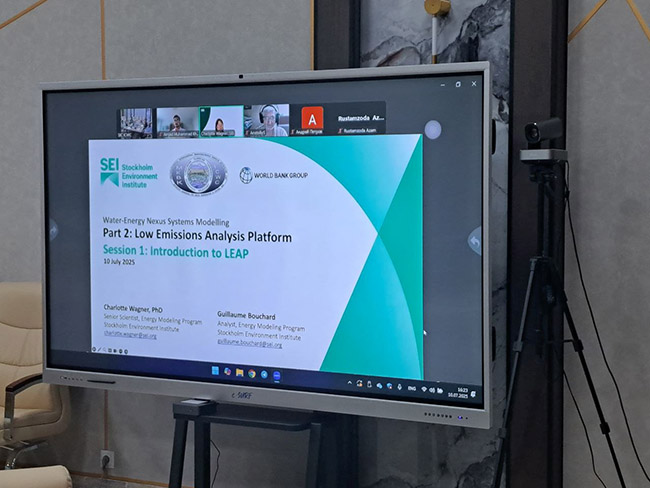
The workshop is a part of the project's second stage, which is focused on energy component. The key theme was the LEAP model and its application for analysis of energy scenarios in water-energy nexus.
The workshop brought together participants of Technical group 2, which includes national energy and water experts from Tajikistan, Kazakhstan, Kyrgyzstan and Uzbekistan.
The key workshop objectives include:
1. Modeling energy systems by LEAP
- Introductory lecture: how to start the application, basic navigation
- Handling the analysis results
- Building and modeling scenarios and emissions
- Forecasting energy demand
- Modeling energy supply
- How to launch, run and analyze existing LEAP models
2. Integrated water-energy system modeling (Central Asia)
- Exploring LEAP's capabilities for Central Asia
- Demonstrating WEAP-LEAP combined operation
- Reviewing current policies in the region
The LEAP model helps to assess the energy system sustainability and compare different scenarios while considering emissions and resource constraints. It is helpful for searching the soundest policy and investment strategies, reducing uncertainty and providing a cross-sectoral approach to the energy-water nexus.
In the second part of the workshop, the participants gained practical experience in building data structure. This laid the groundwork for future independent work with the LEAP model and its usage in analyzing water-energy nexus.
The workshop was a crucial step in the second stage of the project, which aims to develop expert skills in modeling the energy system and its integration with the water sector. The workshop not only provided a foundation for future work but also served as a platform for dialogue and fostering a common language between representatives of the water and energy sectors. The knowledge and skills gained will form a solid foundation for subsequent project stages and for the development of an integrated approach to resource management in Central Asia.